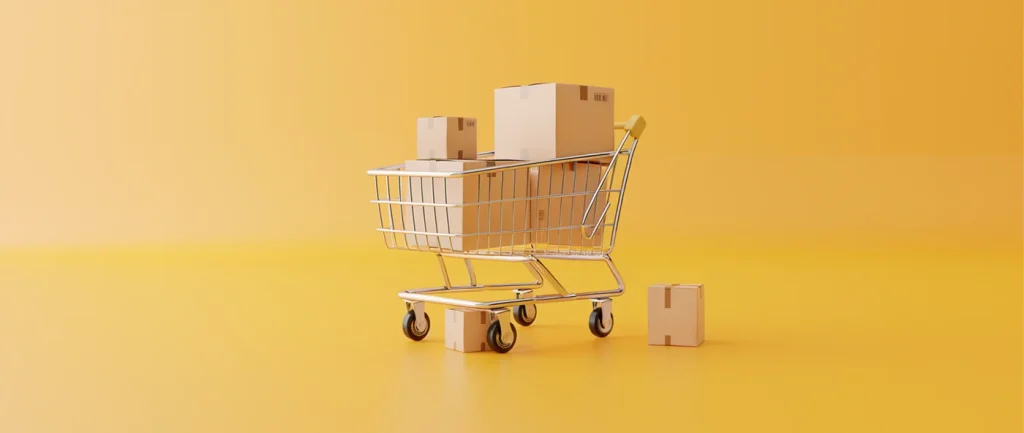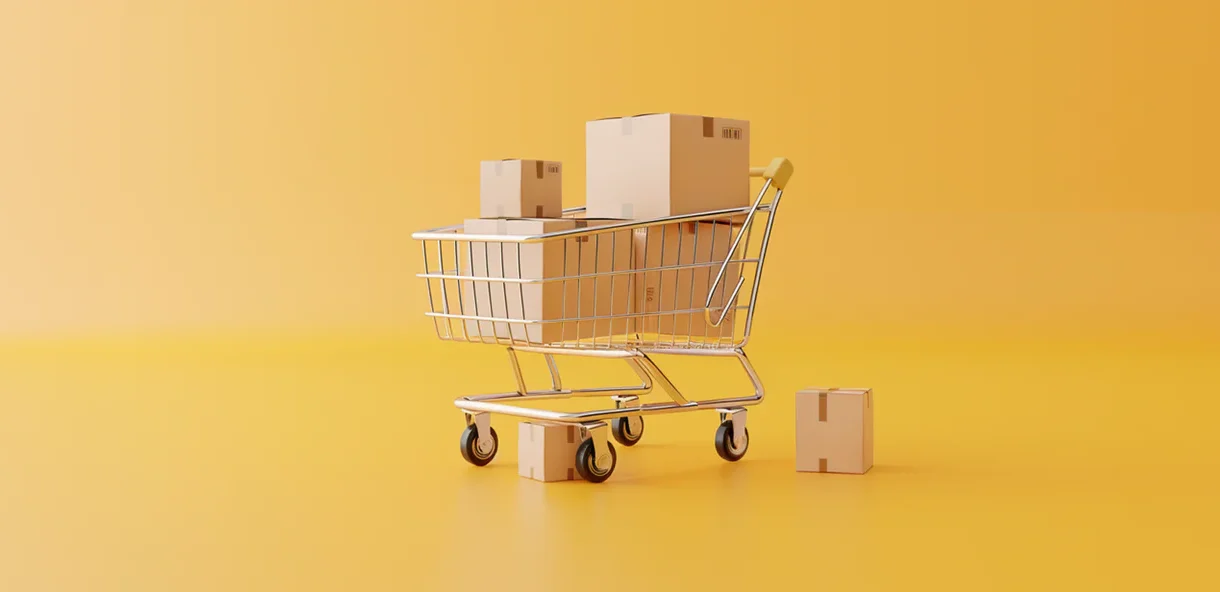Dropshipping is a simple, popular way to start a business. It removes common retail challenges such as buying, storing, and shipping inventory.When a store using dropshipping makes a sale, it forwards the order to a supplier, who handles delivery to the customer. This lets store owners focus on other tasks, like marketing and branding.

What is dropshipping?
Dropshipping is a retail fulfillment method where online stores sell products without keeping them in stock. When a customer places an order, the store forwards it to a dropshipping supplier who ships the product to the customer. Dropshipping is an efficient order fulfillment model with low overhead but comes with trade-offs, such as reduced control over the customer experience. Many businesses prefer dropshipping because it removes costs like warehouse storage and unsold inventory.
What are dropshipping suppliers?
Dropshipping suppliers fulfill orders made by retailers on behalf of customers. They produce or source products, store them, package them for shipping, and organize delivery to the customer address.You might work with an individual supplier or a platform that hosts a directory of suppliers, such as AliExpress. Some manufacturers, wholesalers, and independent makers also offer dropshipping services.
What is a seller of record?
A seller of record is the person or business that sells a product to the customer. As a seller of record, you’re responsible for setting prices, collecting payment including taxes, and complying with local laws. In dropshipping, the seller of record is the point of contact for customers. It’s the seller’s information, not the supplier’s, that appears on packaging slips and invoices. The seller also handles any support requests such as returns and refunds.
Let’s say you use dropshipping, and a customer buys a cat collar from your online pet store. As the seller of record, you forward the order to your supplier, who keeps the product in stock.The dropshipping supplier receives the order, packages the cat collar with a slip containing your information, and ships it to the customer.
How does dropshipping work?
Here’s a step-by-step breakdown of how the standard dropshipping process works:
- Partner with a dropshipping supplier
Find a dropshipping supplier that offers products you want to sell. After signing an agreement, they’ll handle storage, packaging, and shipping of customer purchases.
You could partner with an individual business in your niche. You can also use a dropshipping app to sell products from multiple suppliers.
- Set up an online store
Next, create your online store. Your store lists products from your supplier for a price that you decide.
Add a dropshipping app to your store to keep product listings updated and automatically forward orders to suppliers:
Collective lets eligible Shopify merchants sell products from top Shopify brands.
DSers connects Shopify stores to AliExpress.
Zendrop has a catalog with more than a million products.
Spocket includes dropshipping suppliers in the US, Europe, Brazil, and India.
AutoDS uses AI to help you find and import popular products to your store.
- Receive a customer order
When a customer visits your store and places an order, the checkout process happens as normal. The customer pays, receives order confirmation, and awaits delivery. - Forward the order to the supplier
Once your customer pays for the order, send the order details to your dropshipping supplier. If you’re using a dropshipping app, this step is automated. - Supplier prepares and ships the product
The dropshipping supplier prepares the order and ships it directly to the customer. Many suppliers offer branded invoices and custom packaging to enhance the unboxing experience. - Customer receives the product
The customer receives their product from the supplier while the store handles any customer service needs.
How does dropshipping work?
Here’s a step-by-step breakdown of how the standard dropshipping process works:
- Partner with a dropshipping supplier
Find a dropshipping supplier that offers products you want to sell. After signing an agreement, they’ll handle storage, packaging, and shipping of customer purchases.
You could partner with an individual business in your niche. You can also use a dropshipping app to sell products from multiple suppliers.
- Set up an online store
Next, create your online store. Your store lists products from your supplier for a price that you decide.
Add a dropshipping app to your store to keep product listings updated and automatically forward orders to suppliers:
Collective lets eligible Shopify merchants sell products from top Shopify brands.
DSers connects Shopify stores to AliExpress.
Zendrop has a catalog with more than a million products.
Spocket includes dropshipping suppliers in the US, Europe, Brazil, and India.
AutoDS uses AI to help you find and import popular products to your store.
- Receive a customer order
When a customer visits your store and places an order, the checkout process happens as normal. The customer pays, receives order confirmation, and awaits delivery. - Forward the order to the supplier
Once your customer pays for the order, send the order details to your dropshipping supplier. If you’re using a dropshipping app, this step is automated. - Supplier prepares and ships the product
The dropshipping supplier prepares the order and ships it directly to the customer. Many suppliers offer branded invoices and custom packaging to enhance the unboxing experience. - Customer receives the product
The customer receives their product from the supplier while the store handles any customer service needs.
7 benefits of dropshipping
Here are seven reasons why dropshipping has become a popular ecommerce model for businesses:
Low costs
Wide selection of products to sell
No product development costs
Flexible location
Easier to start
Easier to test
Easier to scale
- Low costs
Because you don’t buy inventory, dropshipping requires minimal upfront investment. Many dropshipping stores are run from home with little more than a laptop, making it an attractive small business idea.
With this benefit, however, comes competition from other dropshipping entrepreneurs. You’ll need to invest your time rather than capital, applying tips from dropshipping experts to make your business work.
- Wide selection of products to sell
Use dropshipping to offer a wide array of trending products to your customers. With no unsold inventory to worry about, you can change your product catalog at will. If suppliers stock a new item, you can immediately list it for sale. - No product development costs
Dropshippers also don’t need to invest (and risk) capital in research and development to create a new product. Instead, they can source proven bestsellers that are ready to ship. - Flexible location
A dropshipping business can be run from just about anywhere with an internet connection. As long as you can communicate with suppliers and provide timely customer support, there are few restrictions on where you live and work. - Easier to start
Dropshipping removes many retail hurdles. Running an ecommerce business becomes easier when you don’t have to:
Manage or pay for a warehouse
Monitor inventory
Pack and ship orders
Track inventory for accounting
Handle inbound return shipments
That said, successful dropshippers carefully oversee the fulfillment process and are committed to providing a satisfying customer experience.
- Easier to test
Dropshipping is a useful fulfillment model for testing customer interest in a new product category. Stores can trial sales of a dropshipped product before committing to buying inventory. - Easier to scale
Scaling a traditional retail business takes forward planning. If a large number of orders arrive unexpectedly, it can be challenging to accommodate them, and you may quickly sell out of your inventory.
Dropshipping businesses tend to scale more efficiently. Plus, you can expand your reach by dropshipping on popular marketplaces like Amazon, eBay, and Etsy.
Dropshipping drawbacks:
Like all retail models, dropshipping also has its downsides. Here are three drawbacks to consider:
Lower profit margins
Inventory volatility
Shipping complexities
- Lower profit margins
The accessibility of dropshipping can lead to intense competition, resulting in lower profit margins as businesses undercut each other.
The more you reduce prices, the harder it becomes to calculate profit margins that work for your store.
Mitigate this problem by choosing the right products and selecting a dropshipping niche that’s not over-saturated.
- Inventory volatility
For all its inventory management benefits, dropshipping exposes retailers to sudden changes in product availability.
With suppliers fulfilling orders for multiple retailers, inventory levels can fluctuate unexpectedly—something that’s less of an issue when you stock your own products.
Fortunately, many dropshipping apps give merchants options when a supplier’s stock hits zero. For example, you could automatically remove a sold-out product or set a “Sold Out” label.
- Shipping complexities
Working with multiple suppliers can complicate order fulfillment. If a customer orders three items from three different suppliers, you’ll need to calculate separate shipping costs and taxes for each. The items may also arrive at different times.
For dropshippers sourcing products from international suppliers, cross-border shipping can introduce additional complexity, including navigating tariffs and import duties, making issues harder to resolve when things go wrong.
One possible solution is to pass shipping costs and import taxes on to customers. However, this may make your pricing less competitive.
Understanding tariffs and Harmonized System (HS) codes is crucial for dropshippers working with international suppliers. These codes determine what import duties apply to your products. Misclassified products can lead to unexpected fees, customs delays, and unhappy customers. Use tools like Tariff Guide to identify the correct HS codes and applicable tariff rates when importing products into the U.S.
Dropshipping in 2025
In 2025, dropshipping remains a popular choice for online store owners, side hustlers, and established retailers.
Dropshipping with Shopify is easy. Integrate a dropshipping app or use Shopify Collective to dropship products from US-based Shopify brands.
Here’s how:
Sign up for a free trial with some basic information about your business.
Personalize your store with a free theme that fits your brand.
Add a dropshipping app to connect with your Shopify store with dropshipping suppliers.
Import products to your store and set prices that include a profit margin.
Start selling and marketing your products.
From first-time sellers to global retailers, Shopify works for everyone. See plans and pricing.



